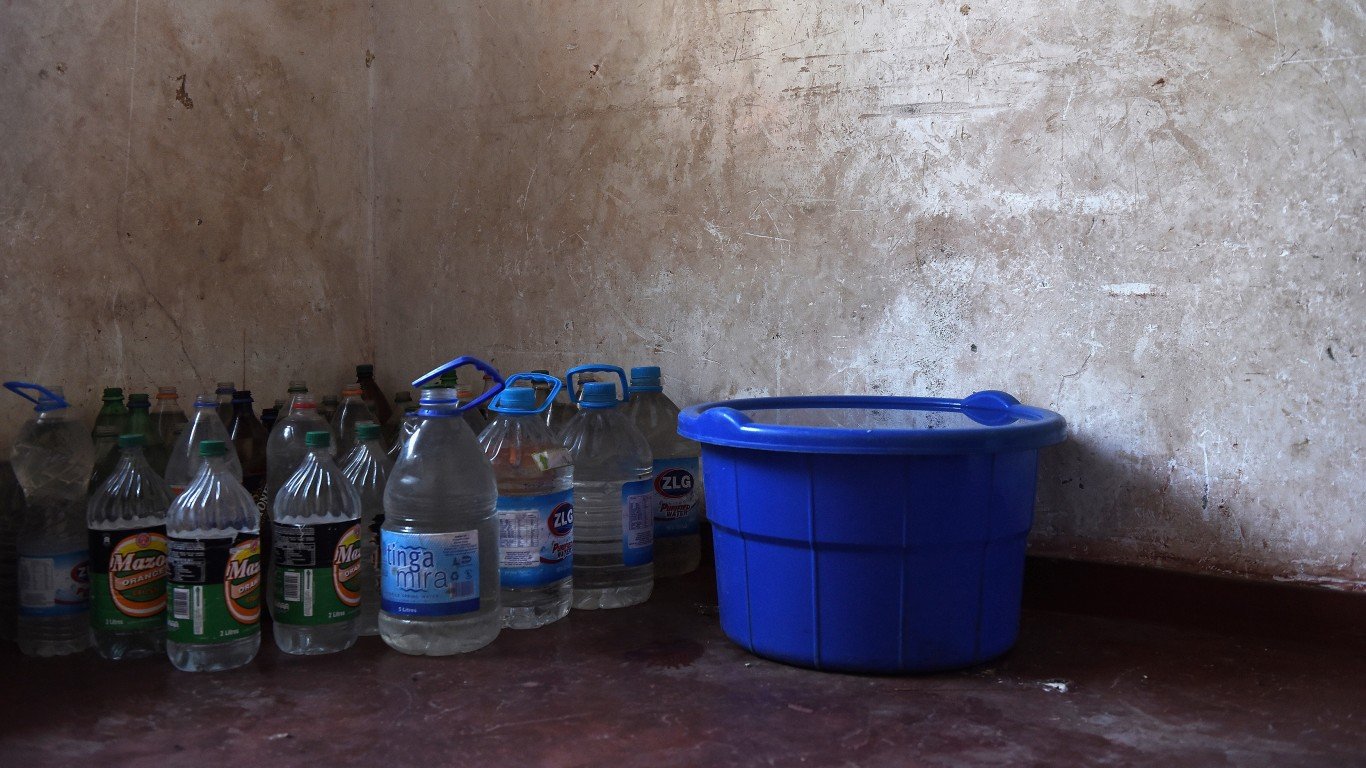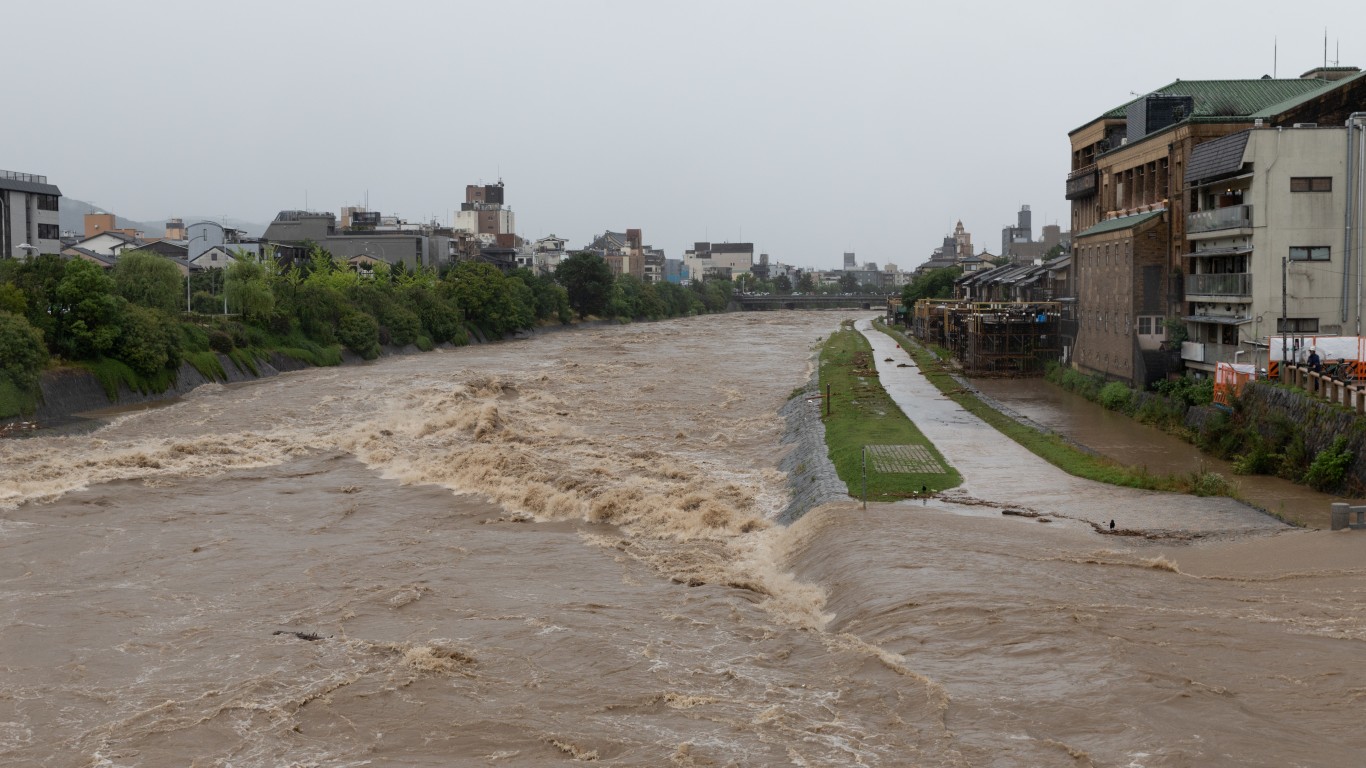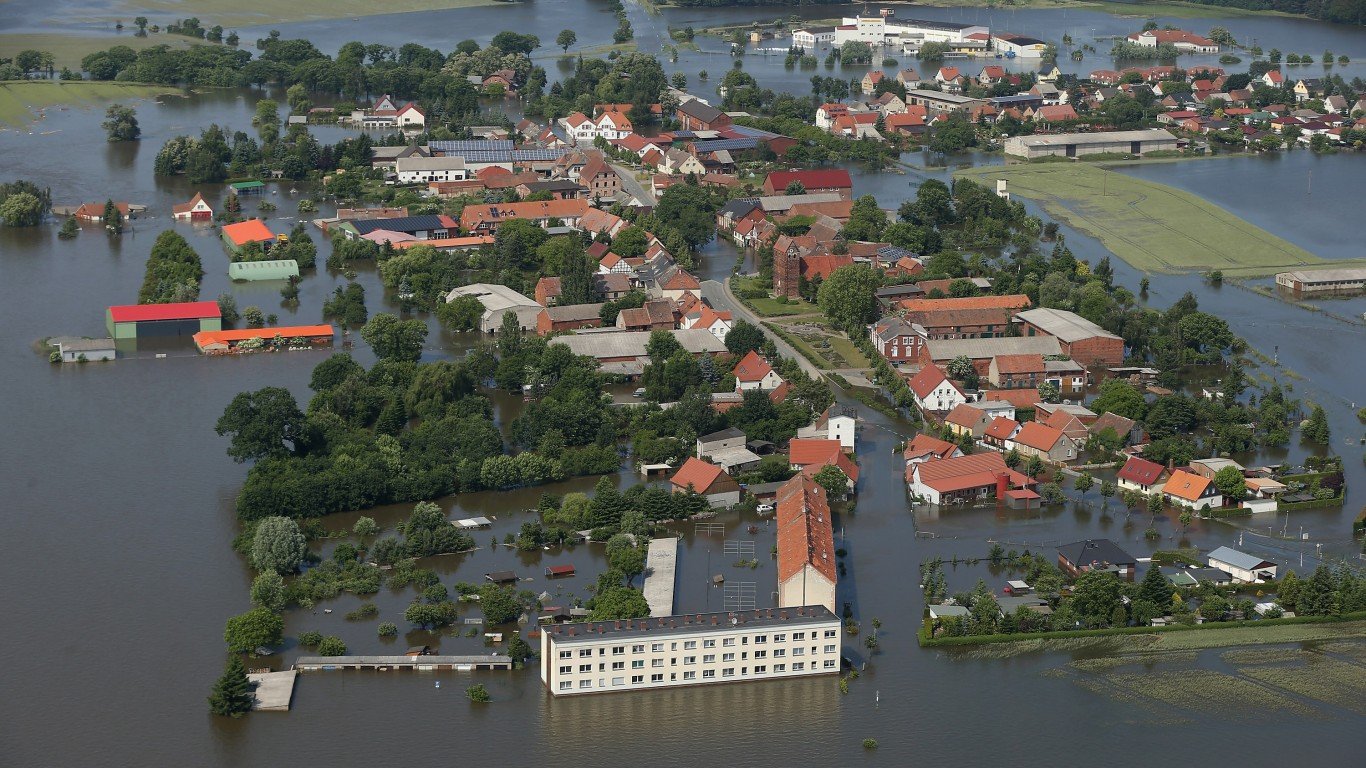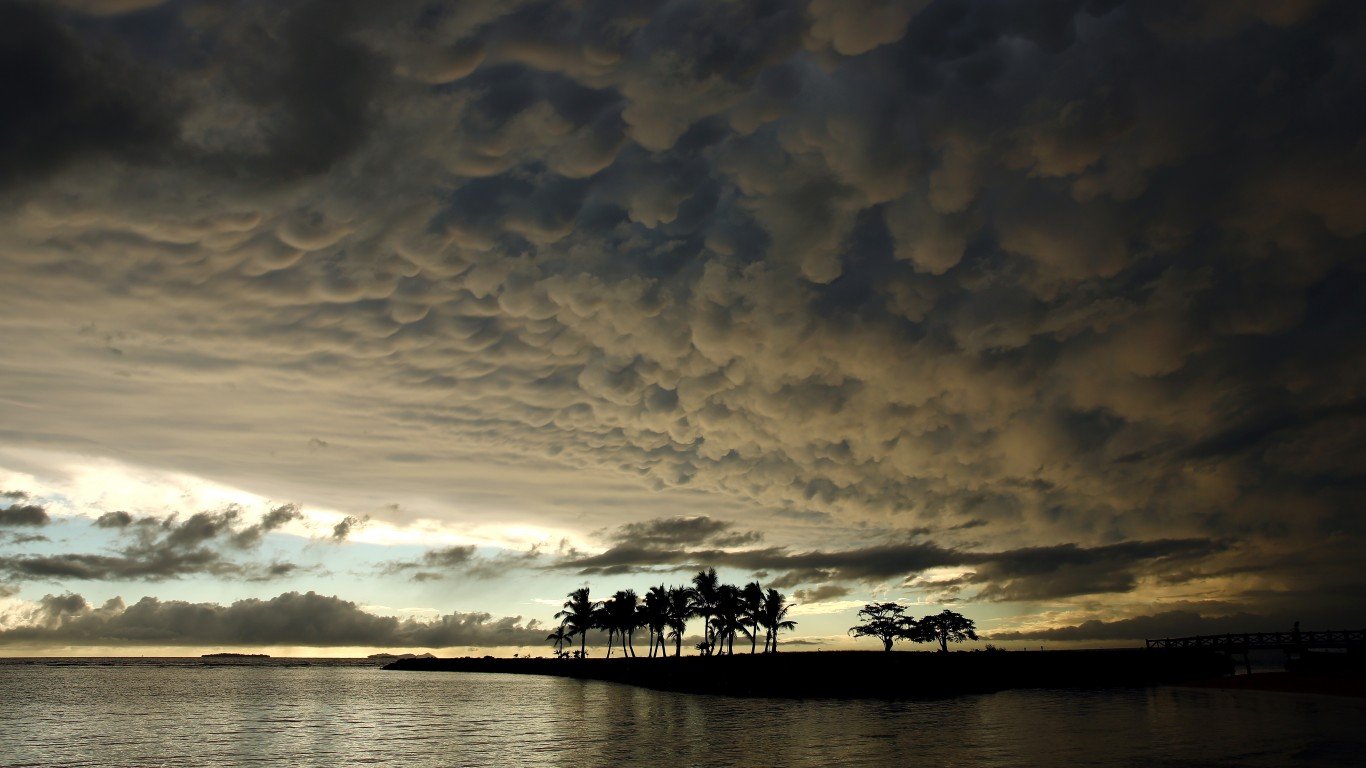
Zimbabwe
> 2020 CO2 emissions: 11.56 million metric tons
> Share of global emissions: 0.03%
> Population: 14,862,930
In 2019, Zimbabwe was one of three African countries hit hardest by Idai, a cyclone that brought 120 mph winds and torrential rain, causing extreme flooding and landslides. At least 340 people were killed and tens of thousands displaced. Hundreds of miles of road infrastructure were destroyed, impeding humanitarian response efforts.

Japan
> 2020 CO2 emissions: 1,061.77 million metric ton
> Share of global emissions: 2.95%
> Population: 125,836,020
Climate change is bringing extreme temperatures and more frequent and dangerous storms to Japan. In 2018, the country suffered from deadly heat waves and torrential rains, killing hundreds and hospitalizing thousands. 2019 was worse. In May and August, Japan experienced two more killing heatwaves and two disastrous storms. In September, Typhoon Faxai made landfall near Tokyo, with winds of up to 130 mph, knocking out power to 900,000 households. In October, typhoon Hagibis arrived with the force of a Category 5 hurricane, killing 100 people and damaging 13,000 homes. The economic damage from the two storms totalled $25 billion.

Germany
> 2020 CO2 emissions: 636.88 million metric tons
> Share of global emissions: 1.77%
> Population: 83,240,520
Climate change is credited with rising temperatures and interfering with precipitation patterns throughout Europe. In 2018, Germany experienced its hottest temperatures on record and only 60% of its usual summer rainfall after heavy rainfalls in January. An April to July heatwave killed 1,234 people, and farmers were left desperate as a result of drought, requiring $1.8 billion in aid.

Sri Lanka
> 2020 CO2 emissions: 23.73 million metric tons
> Share of global emissions: 0.07%
> Population: 21,919,000
The island nation of Sri Lanka is extremely vulnerable to climate change, particularly its critical agriculture sector. While only 30%-40% of farmers in Sri Lanka are aware of climate change, most farmers know that something is wrong. In recent decades, they have experienced increasingly worrying crop loss due to drought, flash flooding, and landslides brought on by shifting weather patterns and sea level rise.

Fiji
> 2020 CO2 emissions: 2.38 million metric tons
> Share of global emissions: 0.01%
> Population: 896,440
Though its contribution to the climate change crisis is negligible, Fiji faces some of its most devastating consequences. The sea is rising faster than the global average, at a rate of 0.2 inches annually, eroding the shoreline, bringing saltwater inland, and ruining precious farmland. Increasing storms are also an immense problem. After three damaging cyclones struck the country in 2018, Fiji made the Germanwatch list of the 10 countries most affected by climate change for that year.

 24/7 Tempo
24/7 Tempo




